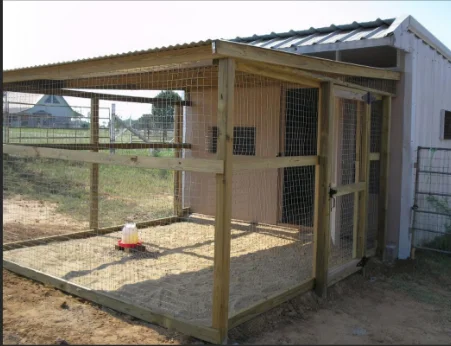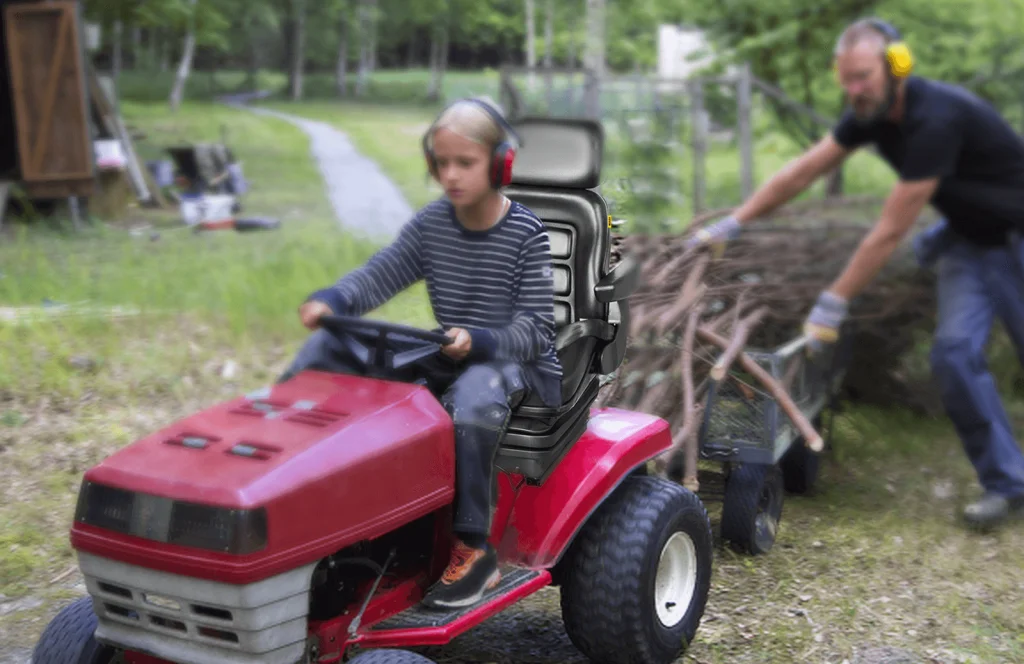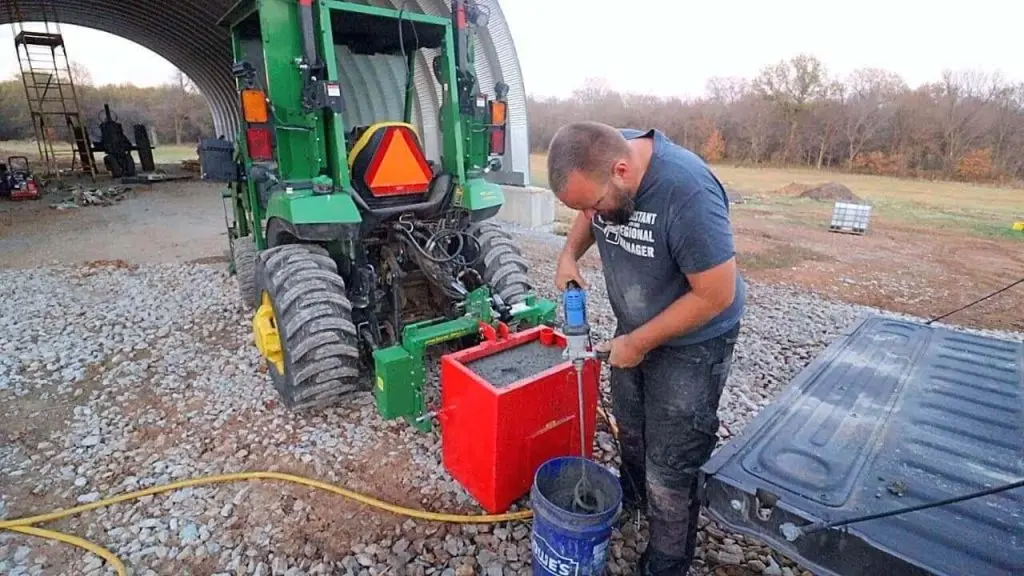One often-overlooked but essential element of a well-maintained chicken coop is the ground beneath their feet. The type of sand you choose for your chicken coop can have a significant impact on the well-being of your feathered friends. From providing proper drainage to minimizing odors and promoting a clean environment, the right sand plays a crucial role in maintaining a comfortable and sanitary coop.
This comprehensive guide aims to demystify the process of selecting the best sand for your chicken coop, taking into account factors such as cleanliness, drainage, durability, and overall chicken well-being.
Table of contents
Why Sand is Essential for Chicken Coops: Maintaining a Clean and Healthy Environment
The choice of bedding material for your chicken coop is a critical decision that directly impacts thewell-being of your feathered companions. Sand, often overlooked in favor of traditional bedding materials, plays a pivotal role in creating a clean and healthy coop environment.
Optimal Chicken Coop Floor
The floor of a chicken coop is where the groundwork for a healthy environment is laid, quite literally. Sand, with its excellent drainage properties, helps to keep the chicken coop floor dry and sanitary. Unlike traditional bedding materials like straw or wood shavings, sand doesn’t retain moisture, preventing the development of damp conditions that can lead to bacterial growth and unpleasant odors. The porous nature of sand allows liquid waste to sift through, promoting a drier and more hygienic chicken coop floor.
Superior Ammonia Control
One of the challenges in maintaining a chicken coop is managing ammonia levels, which can arise from the breakdown of chicken droppings. Sand excels in controlling ammonia due to its ability to allow liquid waste to pass through and evaporate, minimizing the risk of ammonia buildup. This is particularly crucial for respiratory health in chickens, as prolonged exposure to high ammonia levels can lead to respiratory issues.
Ease of Cleaning and Maintenance
Sand proves advantageous in terms of cleaning and maintenance. Unlike traditional bedding materials that can clump together, making it challenging to scoop out waste efficiently, sand allows for easy removal of soiled areas. Regular raking or scooping of waste becomes a simple task, promoting a more thorough and convenient cleaning routine.
Reduced Parasite Habitat
Sand’s structure discourages the establishment of habitats for external parasites such as mites and lice. These pests often thrive in moist bedding materials, making traditional options more susceptible to infestations. By opting for sand, you create an inhospitable environment for these unwanted guests, contributing to the overall health and comfort of your flock.
Longevity and Cost-Effectiveness
Sand proves to be a durable and cost-effective choice for coop bedding. While initial setup costs may be slightly higher than traditional materials, the long lifespan of sand and its ease of maintenance offset these expenses over time. Sand doesn’t break down as quickly as straw or wood shavings, providing a more sustainable and economical solution for chicken keepers.
Types of Sand Suitable for Chicken Coops
When it comes to selecting sand for your chicken coop, not all grains are created equal. Understanding the different types of sand and their specific characteristics is crucial for creating an ideal environment for your feathered friends.
Overview of Different Sand Types
Construction Sand
Coarse and well-draining, construction sand emerges as a favored choice for chicken coop flooring. Composed of larger particles, it facilitates effective drainage, preventing the undesirable retention of moisture. Its durability sets it apart, remaining resistant to breakdown over time and ensuring an extended lifespan within the coop.
The coarse composition of construction sand ensures resilience against the daily wear and tear of coop activities. Its robust nature translates to a longer lifespan, presenting poultry keepers with a cost-effective flooring solution.
Bedding Sand
In contrast to construction sand, bedding sand boasts a finer texture, prioritizing softness. This choice offers a comfortable surface for chickens to walk and rest on, promoting their overall well-being. While maintaining good drainage properties, bedding sand strikes a delicate balance between plush comfort and functional utility.
The soft texture of bedding sand creates a cozy environment for chickens to walk, scratch, and rest. This contributes significantly to their overall well-being, as chickens in a comfortable setting are likely to experience less stress and engage in more natural behaviors.

All-Purpose Sand
Recognized for its versatility, all-purpose sand serves as a well-rounded option catering to diverse coop needs. Combining elements of both construction and bedding sands, it provides a harmonious blend of drainage and comfort. Its adaptability renders it suitable for different coop setups and preferences, making it a versatile solution for poultry keepers.
Addressing a wide range of requirements within a chicken coop setting, all-purpose sand proves versatile. Whether prioritizing drainage, comfort, or a balanced combination of both, this sand type accommodates different preferences, offering a flexible solution for poultry keepers.
Common Misconceptions about Sand Choices
Myth: Sand is Uncomfortable for Chickens
Contrary to this belief, the right type of sand, especially bedding sand, provides a soft and comfortable surface for chickens.
Myth: Sand Doesn’t Provide Adequate Drainage
Properly chosen sand, such as construction or all-purpose, offers excellent drainage, preventing the accumulation of moisture and reducing the risk of bacterial growth.
Understanding the nuances of different sand types allows poultry keepers to make informed decisions based on the specific needs of their coop and flock. Whether opting for construction, bedding, or all-purpose sand, each type brings unique qualities that contribute to a healthier and more comfortable environment for your chickens.
Considerations When Choosing Sand for Your Chicken Coop
Selecting the right sand for your chicken coop involves careful consideration of various factors. By understanding these elements and tailoring your choice to the specific needs of your coop, you can create an optimal environment for your feathered companions.
Coop Size and Layout
The size and layout of your chicken coop influence the amount and type of sand needed. Different sizes like VEVOR’s chicken coop, metal chicken coop and metal large chicken coop require different types of sand. So, consider the dimensions and design to ensure efficient coverage and functionality.
Climate and Weather Conditions
Take into account the local climate and weather patterns. In areas with heavy rainfall, a sand type with superior drainage, such as construction sand, may be preferable to prevent waterlogging.
Maintenance Preferences
Assess your preferred cleaning and maintenance routine. Some sand types, like construction sand, are easier to scoop and clean, while others, like bedding sand, may require more frequent raking.
Budgetary Constraints
Consider your budget when choosing sand for your chicken coop. While certain types may have higher upfront costs, they may prove more cost-effective in the long run due to durability and longevity.
Flock Size and Behavior
The number of chickens in your flock and their behavior patterns play a role in determining the suitable sand type. Larger flocks may benefit from durable construction sand, while smaller flocks might find comfort in bedding sand.
Tips for Making an Informed Decision
Research Local Sand Options
Explore local sources for sand to minimize transportation costs. Additionally, local sand varieties may be better suited to the climate and conditions in your area.
Consult with Poultry
Experts Seek advice from experienced poultry keepers or consult with agricultural extension services. They can provide insights into sand choices that have proven successful in similar coop setups.
Test a Small Area First
Before committing to a large quantity of sand, test a small area in your coop with the chosen type. Monitor how it performs over time, considering factors like drainage, comfort, and ease of cleaning.
Prioritize Health and Safety
Ensure that the chosen sand is free from contaminants and safe for poultry. Avoid sand with sharp or abrasive particles that could potentially harm your chickens’ feet.
Adapt to Changing Needs
Be flexible in your approach. If you notice any issues with the chosen sand, be willing to adapt and make adjustments to better suit the evolving needs of your coop and flock.
By carefully considering these factors and following these tips, you can make an informed decision when choosing sand for your chicken coop. Remember that the ideal sand type is not a one-size-fits-all solution, and tailoring your choice to the unique requirements of your coop ensures a healthier and more comfortable living space for your chickens.

Maintenance Tips: How Often to Change Chicken Bedding
The optimal frequency for changing chicken bedding depends on several factors, including the size of your flock and coop conditions. But if you have anything like VEVOR’s large metal chicken coop then it is advisable to change the bedding every 1-2 weeks. However, if you have a smaller flock, you can extend the duration between changes. When contemplating how often to change chicken bedding, consider the following insights for optimal coop hygiene:
Regular Checks
Conduct regular checks of your chicken coop to assess the condition of the bedding. Visual inspections help identify areas that may require immediate attention.
Seasonal Adjustments
Adjust the frequency based on seasonal variations. In colder months, moisture retention may be higher, necessitating more frequent changes to prevent dampness and odor.
High-Traffic Areas
Focus on changing bedding more frequently in high-traffic areas where chickens tend to congregate. This ensures a clean and comfortable environment for your flock.
Tips for Maintaining a Hygienic Coop Environment
Remove Wet Spots Promptly
Wet spots in the bedding can lead to unpleasant odors and pose health risks. Promptly remove wet bedding to maintain a dry and hygienic coop environment.
Deep-Clean Periodically
Schedule deep-cleaning sessions periodically. Remove all existing bedding, sanitize the coop, and replace it with fresh, dry material to prevent the buildup of harmful bacteria.
Use Dust-Free Bedding
Opt for dust-free bedding to promote respiratory health in your chickens. Dust particles can exacerbate respiratory issues, so choose bedding options that minimize airborne particles.

Consider Natural Materials
Explore natural bedding materials like straw or hay. These materials not only provide comfort but also contribute to a healthier coop environment.
Implement the Deep Litter Method
For those aiming for sustainability, consider the deep litter method. This involves adding a thin layer of fresh bedding regularly, allowing beneficial microorganisms to break down waste, and reducing the frequency of complete bedding changes.
Tips from VEVOR: Crafting the Perfect Coop
Crafting the perfect chicken coop involves:
- Aligning with expert recommendations.
- Integrating sand for optimal results.
- Steering clear of common mistakes.
VEVOR offers insights and guidance to elevate your coop management, ensuring the well-being of your feathered friends.
How VEVOR Chicken Coops Align with Expert Recommendations
VEVOR’s chicken coops stand as a testament to expert recommendations in the poultry industry. The design seamlessly merges functionality with innovation, prioritizing the safety and comfort of your chickens. VEVOR coops align with expert advice by incorporating robust mesh enclosures for impenetrable barriers, elevated structures to deter ground-level access and smooth surfaces that deny snakes a climbing advantage. This dedication to detail reflects VEVOR’s commitment to creating a secure haven in accordance with industry best practices.
Common Mistakes to Avoid
Ensuring the well-being of chickens within coops demands careful consideration in both the selection and upkeep of sand. Here, we discern potential pitfalls associated with these aspects, underscoring the adverse effects on the overall health and contentment of poultry.
Inadequate Drainage
Effective drainage is essential in preventing moisture accumulation, a breeding ground for bacteria and fungi. The negative impacts extend to elevated humidity levels, posing risks to respiratory health and an increased vulnerability to infections, compromising the overall health of the flock.
Oversight in Particle Size
The importance of particle size cannot be understated. Overlooking this aspect hinders not only effective drainage but also the provision of a comfortable and clean surface for natural chicken behaviors. This translates to discomfort for the flock, hindering activities like scratching and dust bathing and a less hygienic coop environment due to reduced waste absorption.
Neglecting Regular Maintenance
Regular upkeep is essential in preventing waste accumulation, a factor contributing to an environment conducive to pests. The negative consequences include an increased risk of parasites and pests negatively affecting the chickens’ health and overall unsanitary space, causing stress and discomfort for the flock.
Ventilation Oversight
Proper ventilation is critical in preventing moisture retention in the sand. Inadequate airflow leads to elevated humidity levels, fostering respiratory problems and compromised air quality, adversely affecting the overall well-being of the chickens.
Utilizing Contaminated Sand
Selecting sand without ensuring cleanliness and safety introduces the risk of harmful substances or pathogens. This translates to increased susceptibility to diseases transmitted through contaminated sand and potential exposure to toxins or harmful substances, impacting the chickens’ health.
Final Words
The well-being of your feathered friends is intricately tied to the choices you make in coop management. Selecting the appropriate sand is not merely a matter of preference; it is a crucial component in creating an environment that fosters comfort, cleanliness, and overall health for your cherished flock.
In crafting the perfect coop, VEVOR chicken coops align with expert recommendations, ensuring the well-being of your feathered friends. Do check the products out!





Its like you read my mind! You appear to know so much about this, like you wrote
the book in it or something. I think that you could do with
some pics to drive the message home a little bit, but other
than that, this is magnificent blog. A great read. I will definitely
be back.